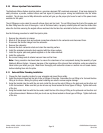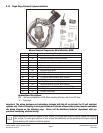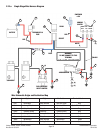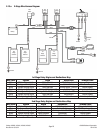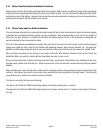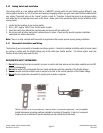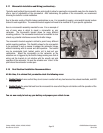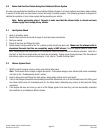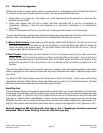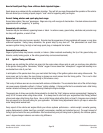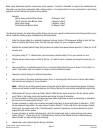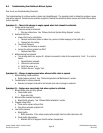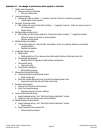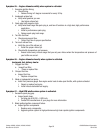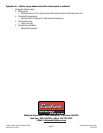
Catalog #70080, #70081, #70082, #70083
Brochure No. 63-0312
©2008 Edelbrock Corporation
Rev. 07/08
Page 26
How to Read Spark Plugs From a Nitrous Oxide Injected Engine...
Spark plugs are a window into the combustion chamber. They will tell you many things about the operation of the vehicle.
Here are some tips on looking at spark plugs to “read” what is happening with your engine:
Correct timing, mixture and spark plug heat range:
Ground strap retains “like new” appearance. Edges are crisp, with no signs of discoloration. Porcelain retains clear white
appearance with no “peppering” or spotting.
Excessively rich mixture
Porcelain may be fuel-stained, appearing brown or black. In extreme cases, ground strap, electrode and porcelain may
be damp with gasoline, or smell of fuel.
Detonation
Edges of ground strap may become rounded. Porcelain has the appearance of being sprinkled with pepper, or may have
aluminum speckles. During heavy detonation, the ground strap tip may burn off. This phenomena can result from
excessive ignition timing, too high a heat range spark plug, or inadequate fuel octane.
Excessively lean mixture
Edges of ground strap may become rounded, or broken. (Under moderate overheating, the tip of the ground strap can
discolor, usually turning purple, or the entire ground strap can become discolored.)
5.0 Ignition Timing and Nitrous
Because we are oxidizing the air/fuel mix going into the engine when nitrous oxide is used, we must pay close attention
to the ignition timing profile. Remember, “nitrous” oxygen is more dense than “atmospheric” oxygen and resulting in an
accelerated burn rate of your fuel.
In anticipation of the quicker burn time, you must retard the timing of the ignition system when using nitrous oxide. The
more power we try to make, the more timing in degrees we must remove from the timing profile. This is not in total
advance but the time in which we bring timing in (the advance curve).
This is why all nitrous users are so concerned with evidence of detonation. The accelerated burn rate of the air/fuel charge
can cause severe detonation without a “nitrous” ignition strategy. A timing profile that is accelerated and a total timing
number retarded will keep you from experiencing catastrophic engine damage.
The general rule of nitrous use ignition timing should be to retard the “total” advance number approximately 2 degrees for
every 50 HP increase when using nitrous oxide. It is always best to start with your engines best total timing (without
nitrous) and reduce total timing from there. Use an initial timing retard setting that is at least 2-4 degrees more retarded
than you expect to be the best setting for your application. All stated timing adjustments listed in jet maps is where the
motor being tested worked best.
Every aspect of the vehicle and engine affects your nitrous systems performance-- vehicle weight, converter, gearing,
engine displacement, cylinder head type, camshaft, compression, manifold and induction type ect.. The exact amount of
timing to pull out varies for every combination. Start conservatively, and put timing back in gradually. On a Nitrous system,
even 1 degree change in advance can make a big difference.



